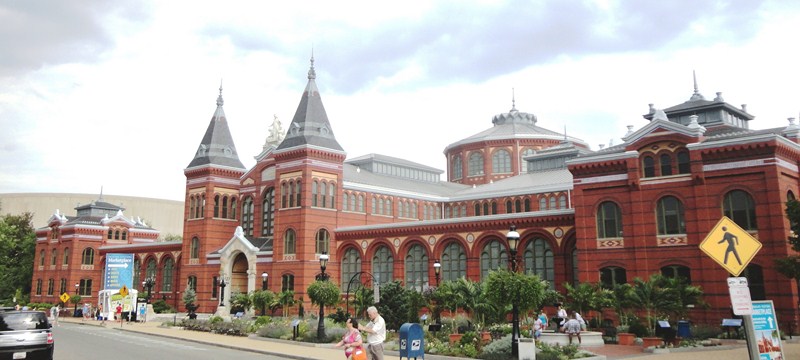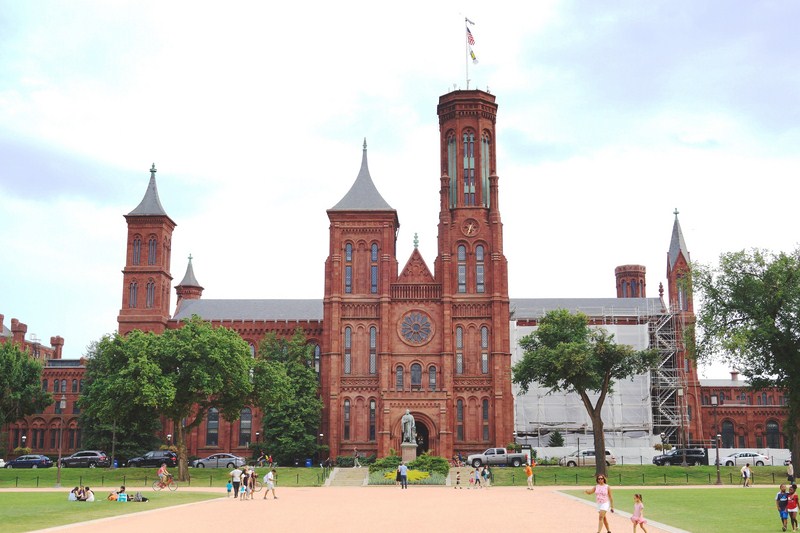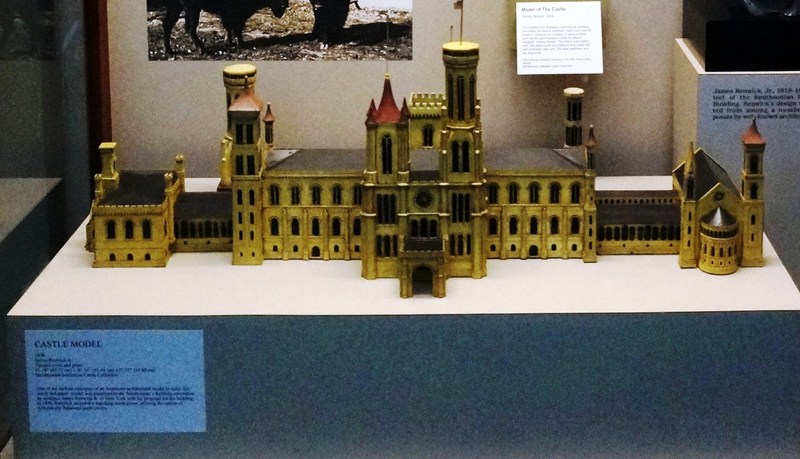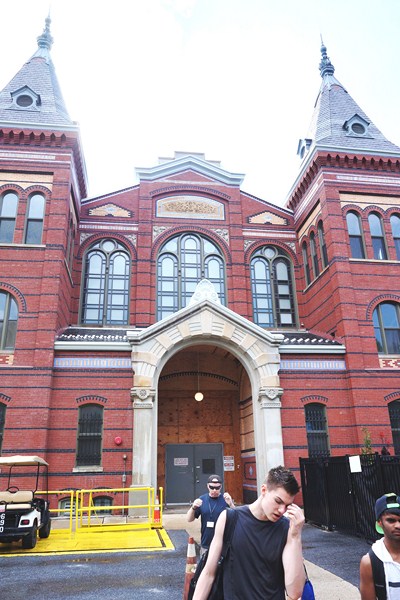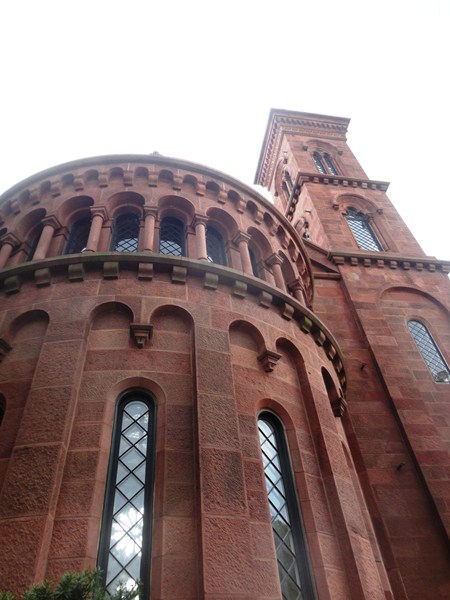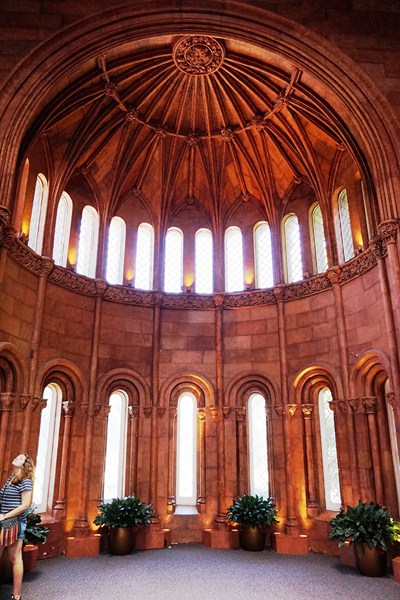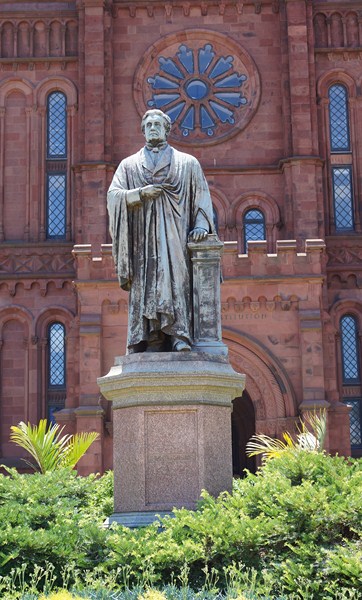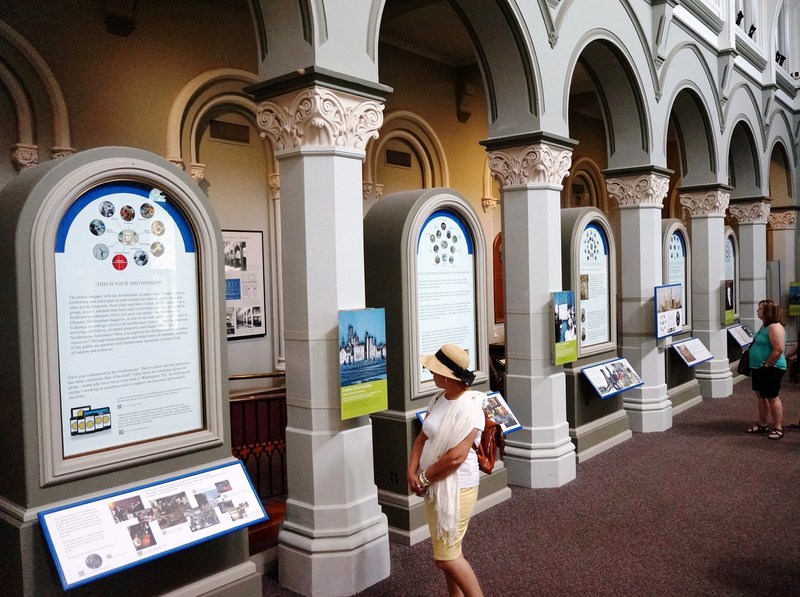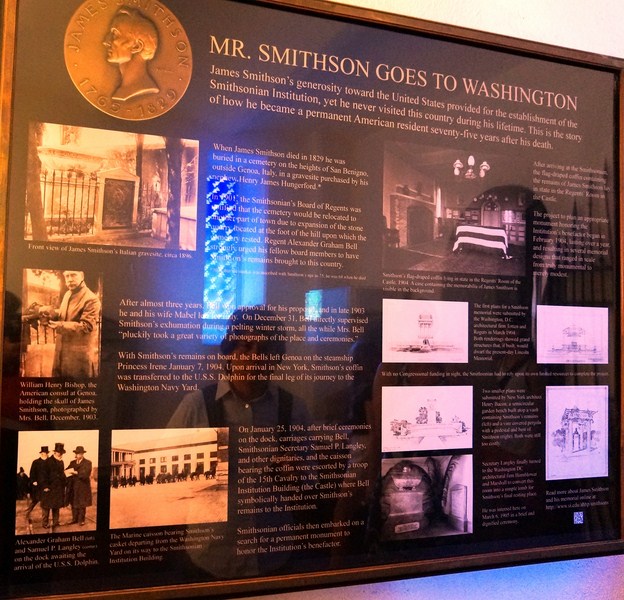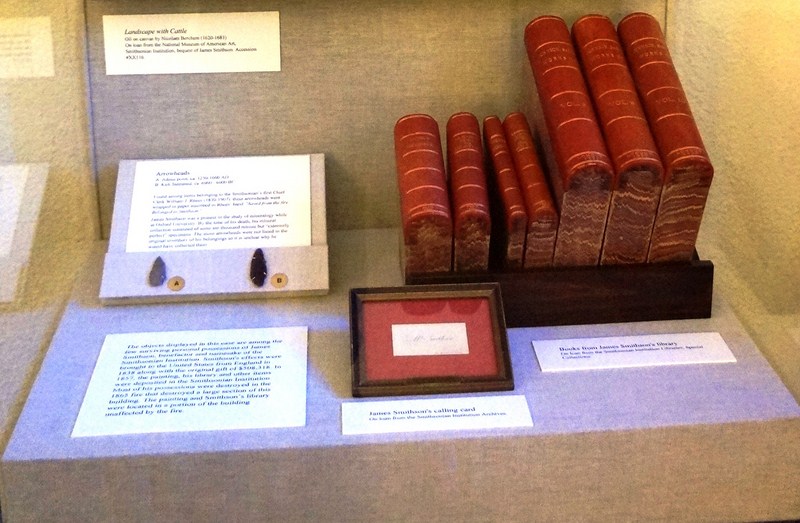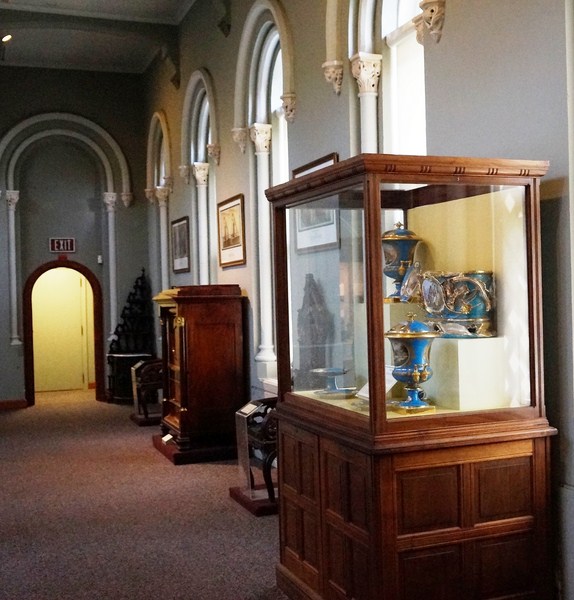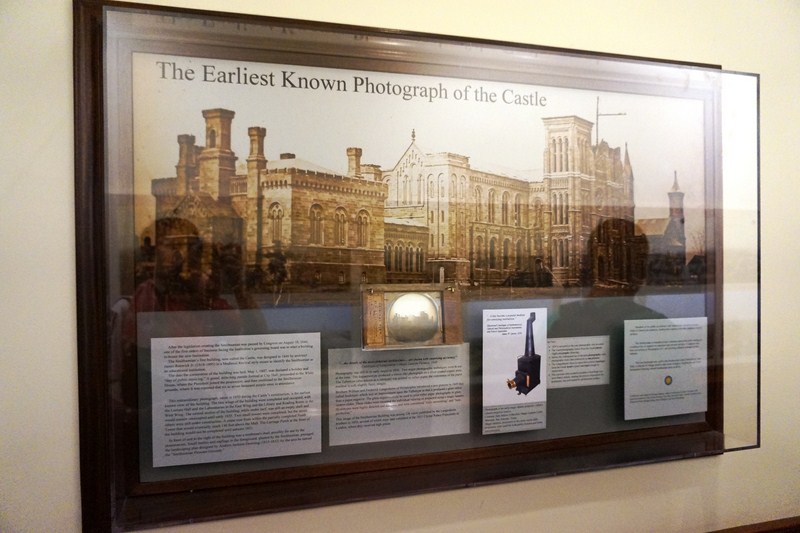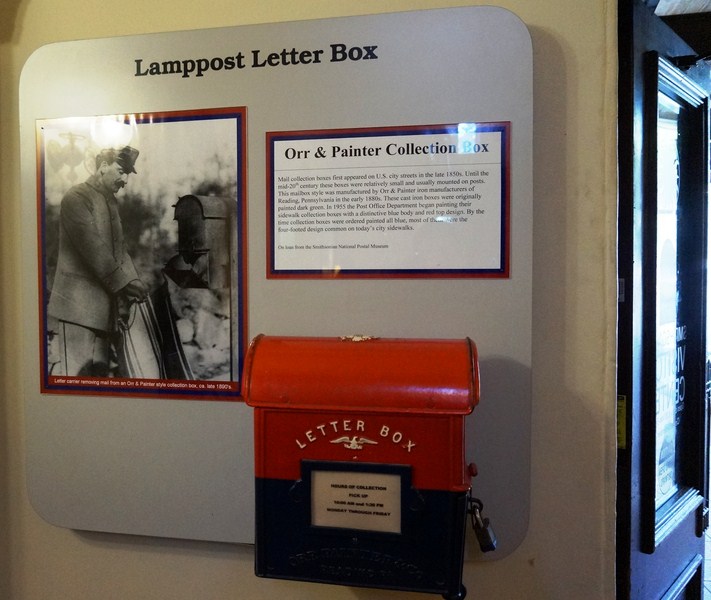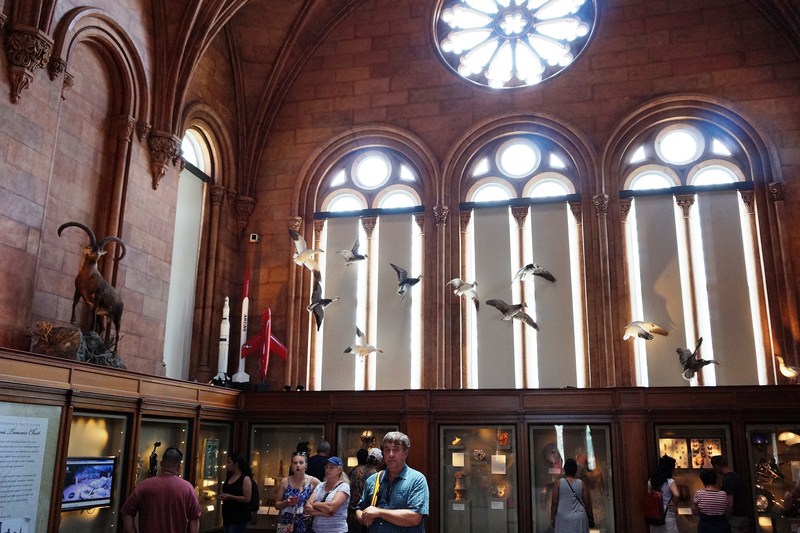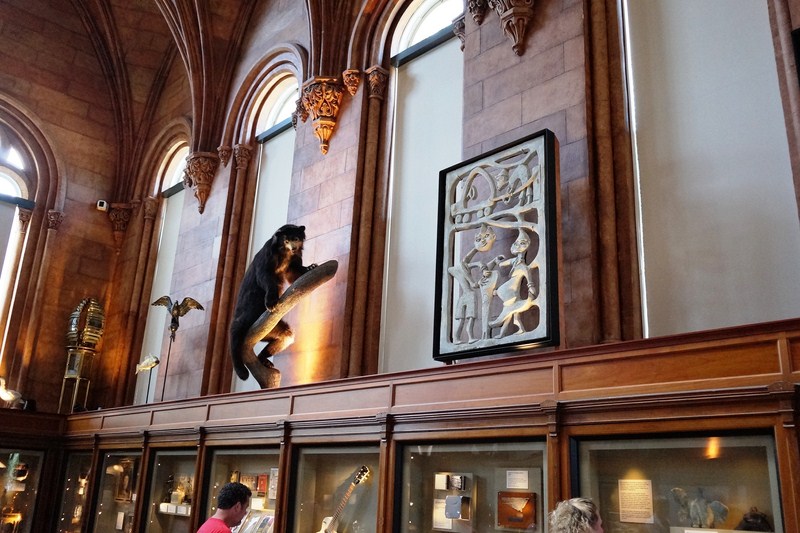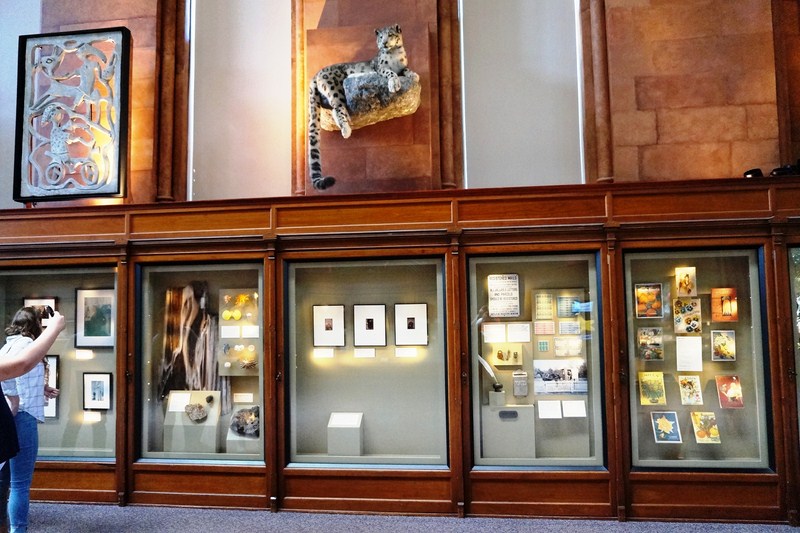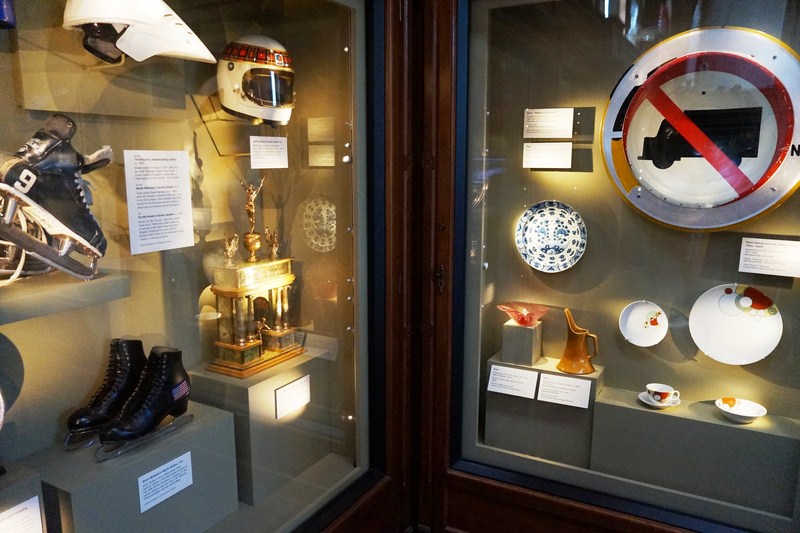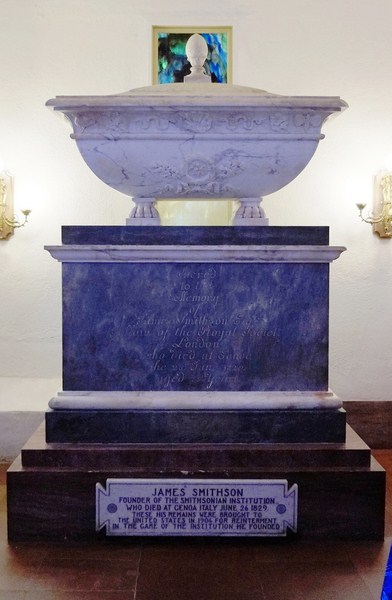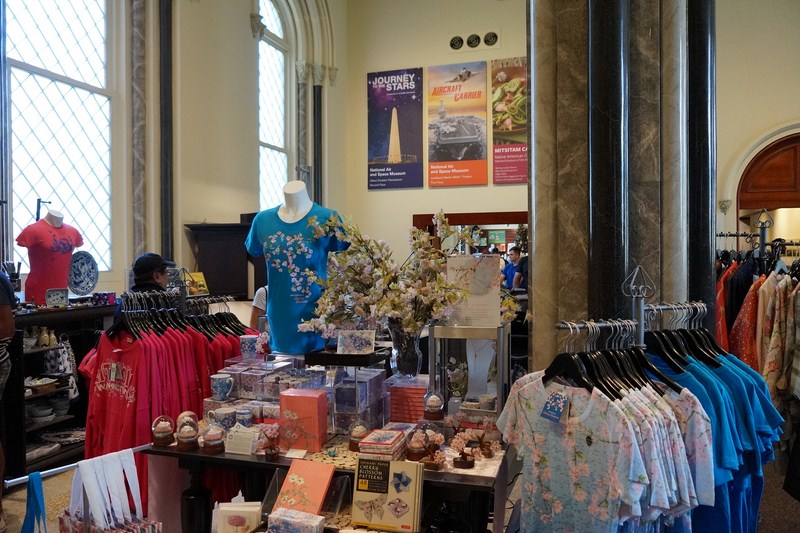The grand, church-like Smithsonian Castle (formally the Smithsonian Institution Building), is located near the National Mall in Washington, D.C., behind the National Museum of African Art and the Sackler Gallery. Housing the Smithsonian Institution‘s administrative offices and information center, the building was built in the Norman Revival style (a 12th-century combination of late Romanesque and early Gothic motifs) to evoke the Collegiate Gothic atmosphere of such venerable colleges such as Cambridge and Oxford in England and the ideas of knowledge and wisdom.
The building had its beginnings in 1846 when a building committee held a nationwide design competition and selected the design of 28 year old architect James Renwick, Jr. by unanimous vote. The first Smithsonian building designed by Renwick (his other works include St. Patrick’s Cathedral in New York City and the Smithsonian’s Renwick Gallery, also in Washington D.C.), a cardboard model of his winning design survives and is on display in the Castle.
Renwick was assisted by Robert Mills, particularly in the internal arrangement of the building. The committee also selected Gilbert Cameron as the general contractor. Construction funds were sourced from “accrued interest on the Smithson bequest.”
Check out “St. Patrick’s Cathedral (New Your City)”
Using elements from Georg Moller‘s book Denkmäler der deutschen Baukunst (Milestones in German Architecture), James Renwick, Jr. designed the Castle as the focal point of a picturesque landscape on the National Mall.
He also originally intended to detail the building with entirely American sculptural flora (in the manner of Benjamin Henry Latrobe‘s work at the United States Capitol) but the final work, instead, used conventional pattern-book designs. The plan allowed for expansion at either end, a major reason for the informal Medievally-inspired design (which would not suffer if asymmetrically developed).
Initially intended to be built in white marble, then in yellow sandstone, the architect and building committee finally settled on Seneca red sandstone (from the Seneca Quarry in Montgomery County, Maryland) which was substantially less expensive than the granite, marble and light Aquia sandstone used by other major buildings in Washington, D.C. and, while initially easy to work, was found to harden to a satisfactory degree upon exposure to the elements.
Here is the historical and construction timeline of the building:
- On May 1, 1847, the cornerstone of the Castle was laid in a grand Masonic ceremony
- In 1849, the East Wing was completed and occupied by Secretary Joseph Henry and his family. Later the same year, the West Wing was completed.
- In 1850, a structural collapse of partly completed work raised questions of workmanship and resulted in a change to fireproof construction.
- In 1852, the Castle’s exterior was completed
- In 1855, Cameron’s interior work was completed.
- In 1865, despite the upgraded fireproof construction, a fire caused extensive damage to the upper floor of the building, destroying the correspondence of James Smithson, Secretary Joseph Henry‘s papers, two hundred oil paintings of American Indians by John Mix Stanley, the Regent’s Room and the lecture hall, and the contents of the public libraries of Alexandria, Virginia and Beaufort, South Carolina, confiscated by Union forces during the American Civil War.
- From 1865-67, renovation was undertaken by local Washington architect Adolf Cluss. A third and fourth floor were added to the East Wing while a third floor was added to the West Wing.
- In 1883, further fireproofing work was also done by Cluss (who, by this time, had designed the neighboring Arts and Industries Building).
- In 1895, electric lighting was installed.
- Around 1900, the wooden floor of the Great Hall was replaced with terrazzo and a Children’s Museum was installed near the south entrance. A tunnel connected to the Arts and Industries Building.
- From 1968-70, a general renovation took place to install modern electrical systems, elevators and heating, ventilation and air conditioning systems.
- In 1987, the Enid A. Haupt Garden and Renwick Gate (also built from Seneca red sandstone retrieved from the demolished D.C. Jail), facing Independence Avenue, were dedicated.
- On January 1, 1965, the Castle was designated as a National Historic Landmark.
- On October 15, 1966, it was included in the U.S. National Register of Historic Places (NRHP reference no. 66000867)
Check out “Enid A. Haupt Garden”
The building, comprising a central section, two extensions (or ranges) and two wings (East and West), has four towers containing occupiable space and five smaller and primarily decorative towers (although some contain stairs).
The principal tower, on the south side is 28 m. (91 ft.) high and 11 m. (37 ft.) square. On the north side are two towers, the taller one 44 m. (145 ft.) high. A campanile, at the northeast corner, is 5.2 m. (17 ft.) square and 36 m. (117 ft.) high.
The central section, as constructed, contains the main entry and museum space (now the Great Hall), with a basement beneath and a large lecture room above.
Two galleries, on the second floor, formerly used to display artifacts, is now the Visitor’s Information and Associates’ Reception area, with interactive displays and 3-D maps pinpointing and detailing the 17 Washington DC-area Smithsonian Institution properties, including museums, galleries and the National Zoological Park. Here, computers electronically answer most common questions.
The first floor of the East Range contained laboratory space with research space on the second floor while the East Wing contained storage space on the first floor and a suite of rooms on the second (as an apartment for the Secretary of the Smithsonian). Currently, this space is used as administrative offices and archives.
The one storey West Range was used as a reading room while the West Wing, known as the chapel, was used as a library. Today, the West Wing and Range are now used as a quiet room for visitors to go.
A crypt, just inside the north entrance, houses the tomb of French-born, British-raised scientist James Smithson. There’s also a coffee and snack shop and a large seating area with free Wi-Fi.
A Castle of Curiosities exhibit delves into the history of the castle and the little that is known of James Smithson’s life. The Welcome to the Smithsonian exhibit, in high-ceilinged rooms, displays art and artifacts representing all of the institution’s members in old, gleaming wooden display cases. The National Zoo’s “panda cam” shows popular bears and ancient Buddhas from the Sackler Gallery.
Smithsonian Castle: 1000 Jefferson Dr SW, Washington, D.C. Tel: +1 202-633-1000. Coordinates: 38°53′19.49″N 77°1′33.59″W

